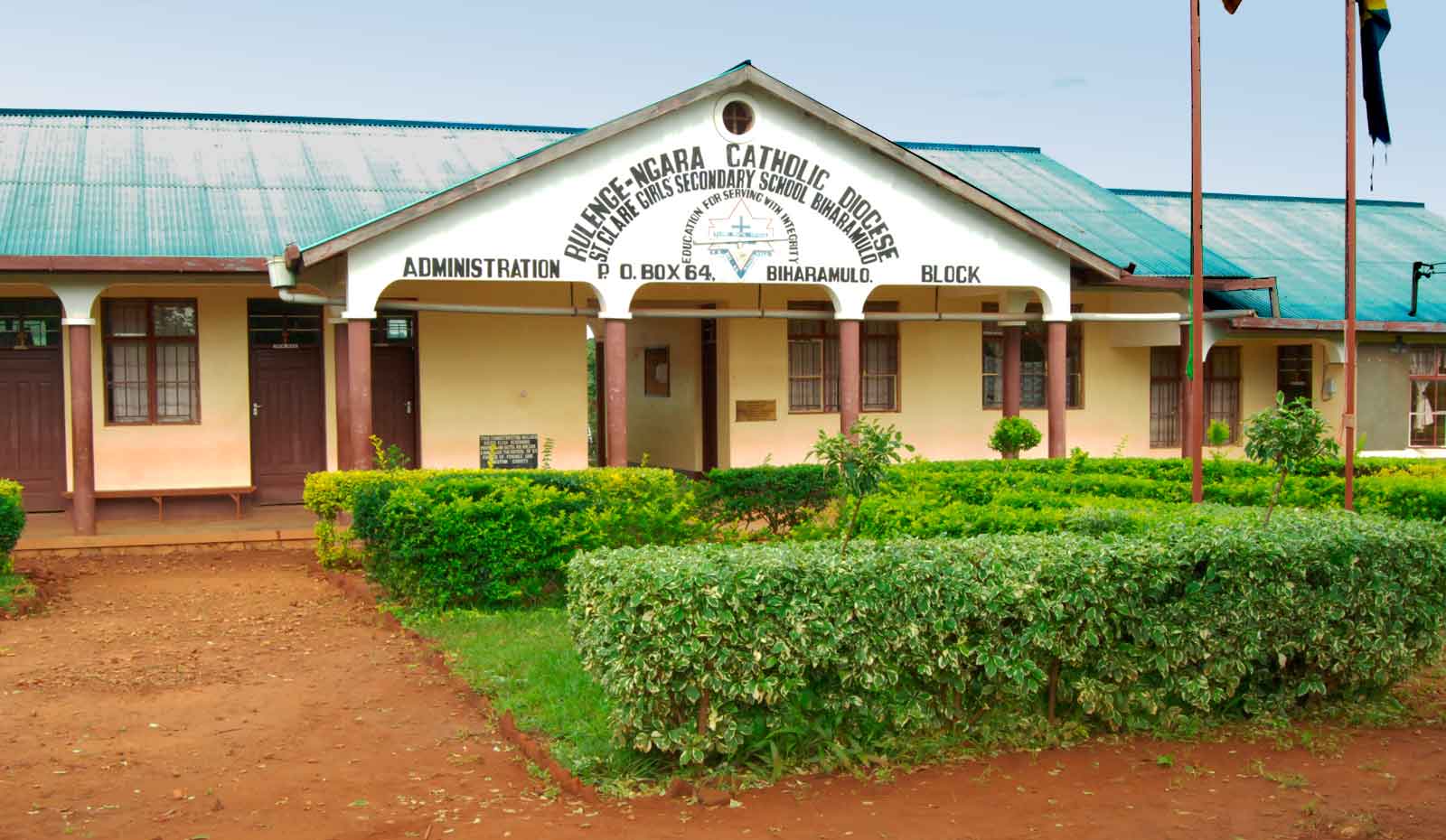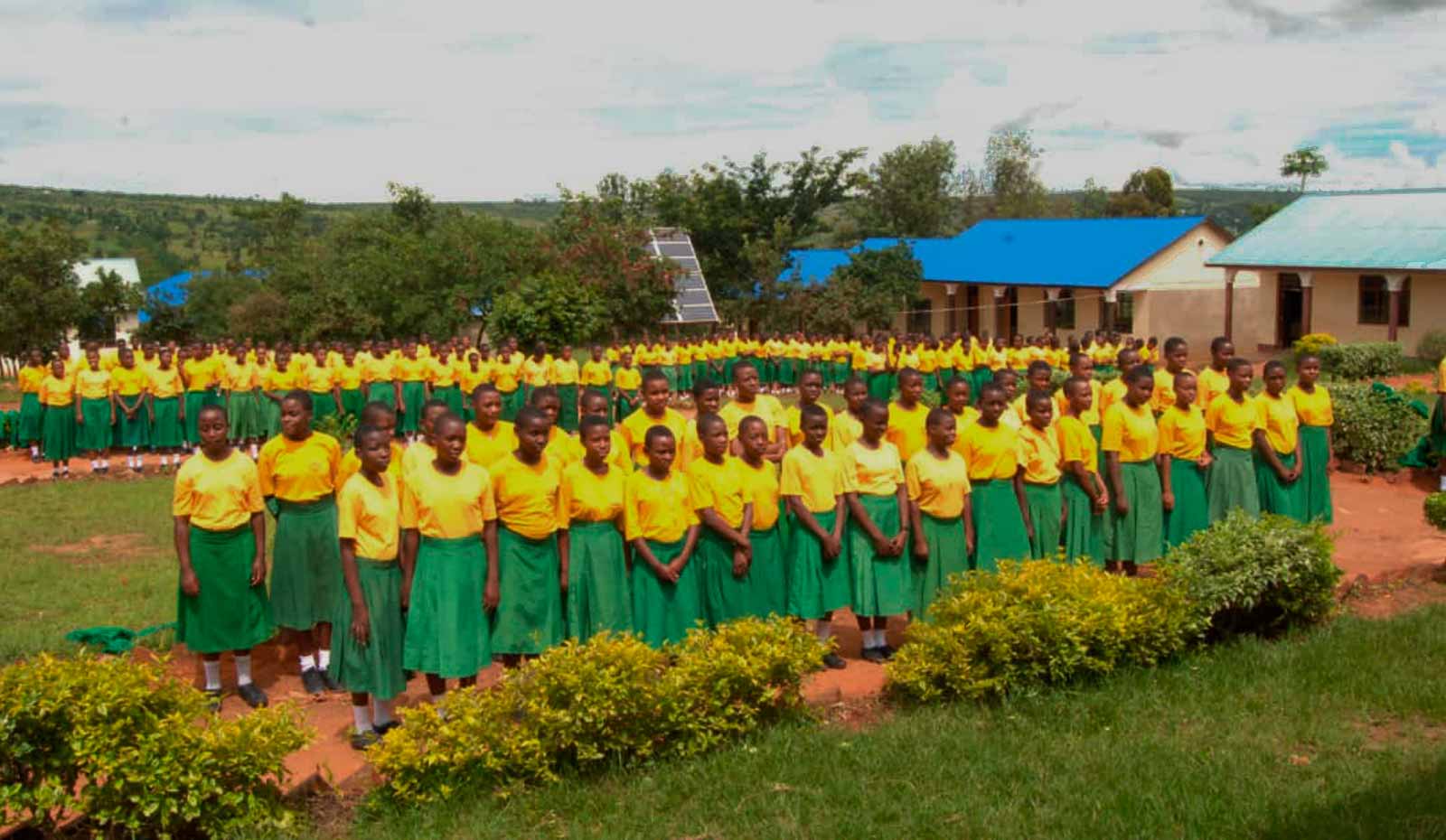I first visited Rulenge Hospital in 2014. I was doing volunteer medical work at Biharamulo Hospital and took a weekend trip to Rulenge. Just a small village on a dusty road, Rulenge is on the Burundi border and about as far west as you can go in Tz. ( google earth may help here). I'd been volunteering at Biramulo District Hosp. since 2007 and while Biharamulo Hospital was needy, Rulenge Hospital and Secondary School were needy, challenging and ready for improvement. So here is the response I got this year when I ask Fr. Emanuel, headmaster at Rulenge, to send us a letter outlining the need for a running water at The Rulenge Secondary School. ....a boarding school for 500 students.
THE NEED OF SOLAR POWERED WATER PUMPING SYSTEM AT RULENGE SECONDARY SCHOOL IN TANZANIA
GENERAL OVERVIEW OF RULENGE SECONDARY SCHOOL
Rulenge Secondary School is a co education school belonging to the Catholic Diocese of Rulenge-Ngara in Tanzania.
1. SCHOOL HISTORY AND POPULATION
Being owned by the Catholic Diocese of Rulenge -Ngara, the school was established in 1980 as a boarding school that receives students from all over Tanzania. Population wise, the school has now number of 581 people of whom 499 are students (215 girls and 284 boys), with 53 staff members together with 29 staff dependants. Our school comprises of Ordinary and Advanced Level students.
In Ordinary Level students study various subjects including English language, History, Geography, Chemistry, Biology, Civics, Kiswahili, Agriculture, French, Literature in English, Bible Knowledge and Religion. After Ordinary Level students may opt to join the Advanced Level in government or private schools or colleges. In Advanced Level at our school, student take combinations of History, Geography and Kiswahili (HGK), History, Geography and English (HGL) History Kiswahili and English (HKL), together with Chemistry, Biology and Geography (CBG). After Form Six, students are able to join universities or colleges.
The School has produced graduates who are serving the country in different public and private sectors such as education, health, agriculture, etc. The contribution of the school in the development of Tanzania is great.
2. SCHOOL AND CLIMATIC CONDITIONS
Two main seasons of weather are prevailing in the region namely dry season and rain season. In between, there is a modified season in which there is rain modified by some sunshine. Thus from January up to March it is a modified climate while from March up to May it is a rainy season. From June to September it is a dry season followed by some rainfall and sunshine in October till December.
3. SCHOOL VISION
To be premier diocesan school committed to academic excellence, human and moral formation of a student for a holistic development of the Church, nation and world.
4. SCHOOL MISSION
Based on ecclesiastical principles, our school is determined to offer excellent quality education and integral formation for all to enhance sustainable development of the society guided by moral values.
5. WATER AND ELECTRICITY AT THE SCHOOL
Both water and electricity are available but insufficient to cater for the school needs hence a big challenge in the school’s life. The school has been depending on water pumped from water swamp at 3Km. The water is not clean until it is treated. For three years now, the machine and pump are not functioning due to the lack of proper spare as they are of old age hence no longer available in Tanzania and in the shops of our neighboring countries.
There is a suggestion of replacing everything and establish a new system but the project would cost millions of money that cannot be obtained by our school. Good enough, at our school and close to dormitories of girls, there is one borehole with much water. Unfortunately, it has no big pump and no enough electricity meant for it. We have tried a pump using Tanesco power but it is very expensive and many times the power is cut off hence a big disturbance and challenge. The provision of solar energy and big pump would be of great help to solve the challenge.
6. PROBLEM EXPERIENCED BY THE SCHOOL COMMUNITY DUE TO WATER SCARCITY
(i) Lack of enough water for ordinary uses due to the expenses in buying Tanesco units.
(ii) Cleanliness is hampered especially for students. Girls are the first victims because they use much water than boys for their cleanliness. This highly frustrates our strategies of retaining girls in the school because they create resentment.
(iii) Dirty water that requires treatment before use (This happens at in summer when the water level falls).
(iv) High expenses in purchasing diesel and Tanesco are incurred to make available water which remains insufficiently supplied.
(v) Teachers and students’ creativities become limited to activities that will not need water supply especially in the dry seasons.
(vi) Lack of reliable water supply is one of the factors affecting staff retention. Teachers, in particular, are employed but terminate their employment with the school because of unattractive environment to them due lack of reliable and clean water.
(vii) Running the school basing on use of fuel and Tanesco is making it expensive for the school in matters of finance.
(viii) Students waste time when water has to be distributed to individuals one by one and sometimes they are late in classes for night preparations.
(ix) The problem of water is one of the serious issues preoccupying the school administration which if eliminated will bring a lot of attraction to the school.
(x) Some projects have failed to function properly due to lack of enough water. Beautification of the school environment is difficult because of lack of water.
(xi) The school is of agriculture bias combination and lack of water renders it difficult to do some practical work. These include gardening in the open space and in the greenhouse, animal keeping and orchard.
(xii) Some projects have been closed especially soap and batik making in dry seasons due to lack of water.
7. EXPECTED IMPROVEMENT IN SCHOOL LIFE ON THE SCHOOL AND STUDENTS
The installation of solar energy and strong pump would lead to the permanent availability of water in the school and eventually lead to the following outcomes:
i) Permanent availability of enough water for daily uses hence improvement of standard of life in the school.
ii) Increase in academic performance since one of the basic needs for teaching and learning activities is water.
iii) Improvement of students ‘health due to the improved cleanliness and sanitation in the school
iv) Girl’s retention in the school as they will have no worry about the cleanliness and life at school.
v) Staff retention at school and improvement of academic performance
vi) Smooth implementation of the school timetable
vii) Cutting down of costs in running the school hence opportunity to focus to other areas of improvement in life of the school.
viii) Practicals for the subject of agricultural science will be conducted without headache for the improvement of the academic performance.
ix) Gardening will be well conducted to get vegetables for students as result of water availability hence the improvement for their diet.
x) The school environment will be beautified since flowers will be planted and watered even during dry season.
8.0 CONCLUSION
Having running water at a low cost at Rulenge Secondary School is a necessity. The availability of running water marks the commencement of an envisaged larger project aimed at making Rulenge Secondary School a good learning centre in Ngara District. This will mark the commencement of other activities that will make Rulenge Secondary School a good learning centre in Ngara District. The school has over 150 acres of land that can be put to use but so far not used one of the reasons being the lack of constant water supply.
New farming projects easily will easily be established notably gardening. Beautification of the school can be made so that students are attracted to the school. It is our expectations that the availability of water will reduce a number of problems as those already outlined above.
Fr. Emmanuel Nzeyimana
The Headmaster



